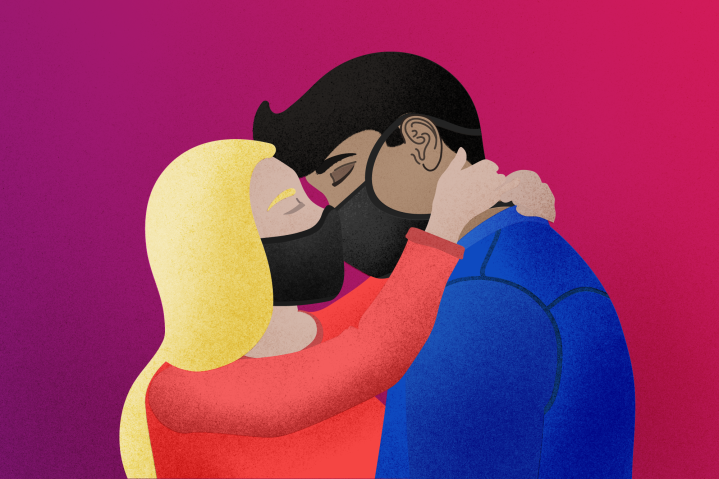
Mainstream Hollywood and the adult entertainment industry have always had an uneasy coexistence, but as both industries inch back toward shooting new content, they’re facing the same problem: How do you protect actors and crew in the COVID-19 world?
In some ways, the porn industry has a head start. Since 1998, adult performers have been screened regularly for HIV and other communicable diseases. And the industry keeps a broad database of who has been tested and their most recent test dates. That’s something that, until recently, was unthinkable in Hollywood.
Big studios still aren’t willing to go that far, but regular testing will be a part of the production process moving forward. Both industries released their guidelines for studios last Friday. (And the Free Speech Coalition, the trade association of the adult entertainment industry, gave the green light for filming to resume in areas where it is permitted.) Their approaches to worker safety are somewhat different, though.
That’s both surprising and entirely predictable. While major studios could learn a lot about tracing and health monitoring from an industry that has been utilizing it for more than 20 years, Hollywood and the San Fernando Valley have always been wary of each other. And the very nature of adult entertainment makes mainstream studios hesitant, at best, to publicly seek advice from that industry. (You don’t have to be a stock market wunderkind to realize that Disney investors would revolt if word got out the company was consulting with Brazzers.)
At the same time, Hollywood studios, in general, invest a lot more in their actors than adult filmmakers. And they protect those investments more ferociously, so picking up advice, regardless of its point of origin, could be beneficial.
How do the protocols compare and contrast? Here’s a look.
The Hollywood plan
SAG-AFTRA, along with the Director’s Guild of America and several other Hollywood unions, released a detailed set of protocols on June 12 as the film and television industry prepares to get back to work. Under that plan, cast and crew will be tested for coronavirus before their first day of work. From there, there will be “regular testing protocols” during the course of the production.
Performers, given their close proximity to each other, will be tested at least three times a week, with daily testing being required of some personnel, especially those “involved in production of scenes that require close or intimate contact, or extreme exertion.” People in production offices, who can socially distance and use personal protection equipment (PPE), will be tested less frequently, but at least once a week.

The unions are also proposing a three-zone system. (Zone A would be actors working on set with no PPE, along with essential crew. Zone B would encompass workers in places like control rooms/trucks, production offices, etc., who would be required to use PPE and follow social distancing rules. Zone C would be the outside world – homes, hotels, etc.) The plan is to keep people in their zones as exclusively as possible.
“Think of it this way: From door to door, people working in Zone A travel along a cocooned path — sometimes involving multiple Zone As — laid out and controlled by people working in Zone B,” the protocols read.
Sets will also add a dedicated health safety supervisor, who will monitor the set and has final authority on enforcement of COVID-19 safety practices, up to and including pausing production.
And sex scenes, which generally limited the number of people on set before the pandemic, will become even more closed.
“For intimate scenes, special care should be given to limiting the number and placement of monitors to ensure that only those individuals who would be authorized to be present during the recording of the scene have access to any monitors,” the union said. “The expansion of use of remote monitoring for COVID-19 prevention must not result in an expansion of the number of people with access to monitors during intimate scenes.”
The porn industry plan
Performers in the adult entertainment industry currently are screened every two weeks for HIV, chlamydia, gonorrhea, hepatitis B and C, trichomoniasis, and syphilis. Before performers are cleared to work on a set, producers access a system known as PASS (Performer Availability Scheduling Services), which shows either a green check (signifying they’re cleared to work) or a red X. The X could mean either their tests are outdated or they’ve tested positive for one of the viruses (the system does not specify for privacy reasons).
Performers who test positive for HIV are retested and if the diagnosis is confirmed, they are barred from the PASS system for life – and no longer eligible to work with any major studio.
Tracking COVID-19 is a bit different than the health monitoring the porn industry is used to, though. The PASS system will show the date of a performer’s last negative test, says Mike Stabile, a spokesperson for the Free Speech Coalition.
Studios that choose not to strictly follow the Free Speech Coalition’s guidelines won’t face any real repercussions.
That said, the porn industry’s posted COVID-19 guidelines are less stringent than you might expect given the close proximity of the actors. When it comes to testing, the advice comes down to one line: “Ideally, each person will test 1-2 days prior to each shoot, and will self-isolate for the period between taking the test and arriving on set, and for the duration of the shoot.”
There is more written about how COVID-19 impacts the Americans with Disabilities Act than there is about active testing of talent, crew, and on-set personnel. Stabile says studios have indicated they will pick up the cost of COVID-19 testing for performers.
Otherwise, the Free Speech Coalition’s guidelines are largely the same advice the Centers for Disease Control and Prevention has been giving for months: Wash hands frequently, clean common surfaces thoroughly, and people not on camera should practice social distancing and wear PPE. Anyone exposed or potentially exposed should self-isolate for 14 days.
There’s also the added degree of difficulty that adult sets aren’t unionized, so studios that choose not to strictly follow the Free Speech Coalition’s guidelines won’t face any real repercussions.
“Each member of the adult industry will need to evaluate their tolerance for risk when deciding when and how to return to production safely,” the Free Speech Coalition says. “Any decision a business makes needs to be based upon the regulatory rules of their jurisdictions, the needs of their specific business, and the advice of their lawyer.”



